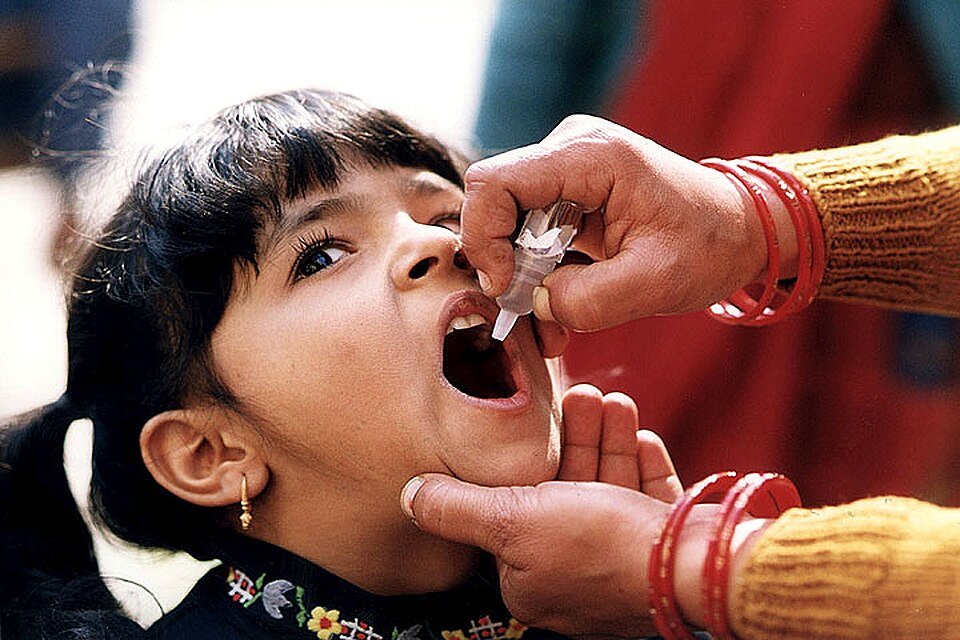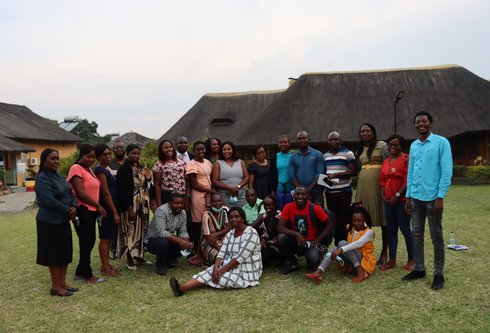Polio is almost gone—but not yet. Chris Gast, PhD, leads polio vaccine projects at PATH’s Center for Vaccine Innovation and Access. In this expert Q&A, he explains why this stubborn virus is so dangerous, why the world needs multiple polio vaccines, and what it will take to end polio for good.
Q: Why is polio such a dangerous disease?
Chris Gast: Polio is a virus that spreads easily through environmental contamination—such as a lack of handwashing opportunities, and other sanitation conditions. There are three different types of poliovirus, labeled 1, 2, and 3. Most people who catch polio don’t feel sick, or they may just feel tired or have an upset stomach.
But in a small number of cases, the virus attacks the nerves. This can cause lifelong paralysis, often in the legs. In the worst cases, it can even take away someone’s ability to breathe on their own. That’s why, years ago, people with polio sometimes had to live in “iron lungs,” large machines that helped them breathe. Since polio mainly strikes young children, protecting them is especially important.

Chris Gast, PhD, Senior Director, Viral Disease Area, at PATH’s Center for Vaccine Innovation and Access. Photo: PATH.
Q: If we already have vaccines, why do we need more?
Gast: There are two main kinds of vaccines. The first is the inactivated polio vaccine, or IPV. It’s given as a shot and is very good at protecting people from getting paralyzed. But IPV alone doesn’t fully stop the virus from spreading in the gut, so vaccinated people can still pass polio to others, if they are infected.
The second kind is the oral polio vaccine, or OPV, which is given as drops in the mouth. OPVs create immunity in the gut, which can stop the virus from spreading in a community and makes them very useful during outbreaks. But in rare situations, the weakened virus in OPVs can change over time and cause new outbreaks in communities with low vaccination rates.
That’s why PATH and partners have created new versions called novel OPVs, or nOPVs. They are designed to be much less likely to change into a dangerous form. The first one, nOPV2, has already been used more than a billion times with great success. Now, we’re working on nOPV1 and nOPV3 to cover all three types of polio.
Q: How close is humanity to wiping out polio completely?
Gast: We’ve made huge progress. Since the Global Polio Eradication Initiative began in 1988, polio cases worldwide have dropped by over 99 percent. Today, the original “wild” form of polio is only found in two countries: Afghanistan and Pakistan.
But there are still outbreaks caused by the older OPV vaccines, especially in parts of Africa, South Asia, and Yemen. And sometimes, polio shows up other places—including Germany, Spain, the United Kingdom, and the United States—when the virus is carried in by travelers and spreads in communities where not enough people are vaccinated. These outbreaks are important reminders that polio is just “one flight away” if we let our guard down and vaccination rates drop.
We’re closer than ever to the finish line, but we need to keep pushing—especially now that funding for polio work is under pressure.
“We’re closer than ever to the finish line, but we need to keep pushing.”— Chris Gast, PhD
Q: What is PATH doing to help finish the job?
Gast: PATH is helping in a lot of ways. We’ve been leading research and trials for the novel OPVs, working with local partners in countries like Indonesia, Bangladesh and Panama. We also help vaccine makers improve how vaccines are produced and tested so they’re more affordable and easier to deliver.
And we’re exploring new tools, such as treatments for people with immune conditions who can carry and spread polio for years. Our aim is simple: make sure the world has the safest and strongest tools to stop polio everywhere. We’re closer than ever, and with steady commitment, we can finally end this disease for good.



